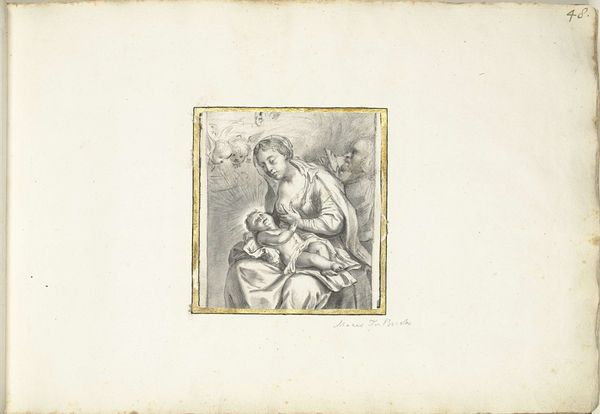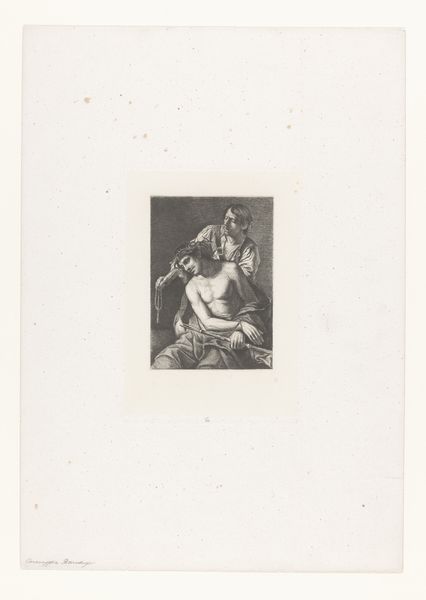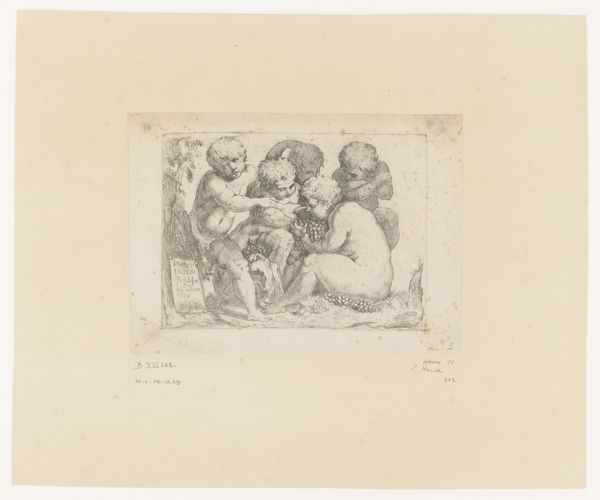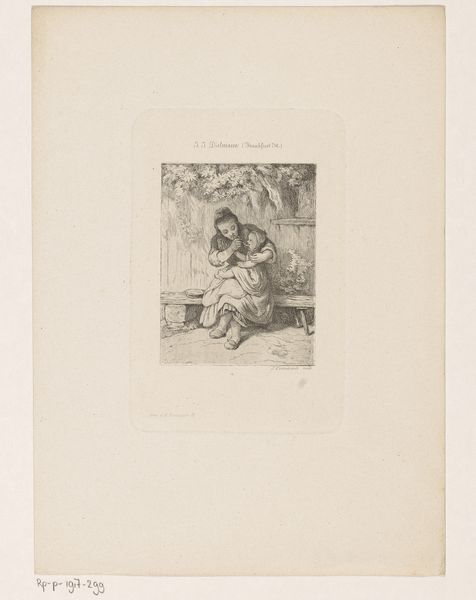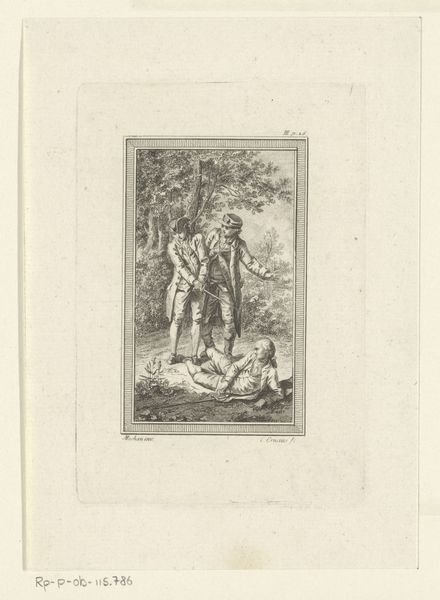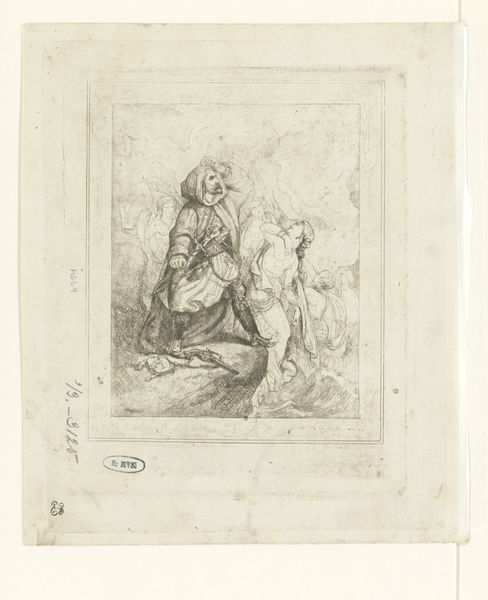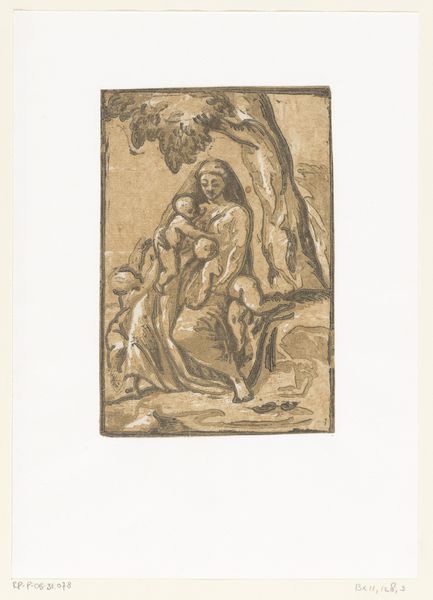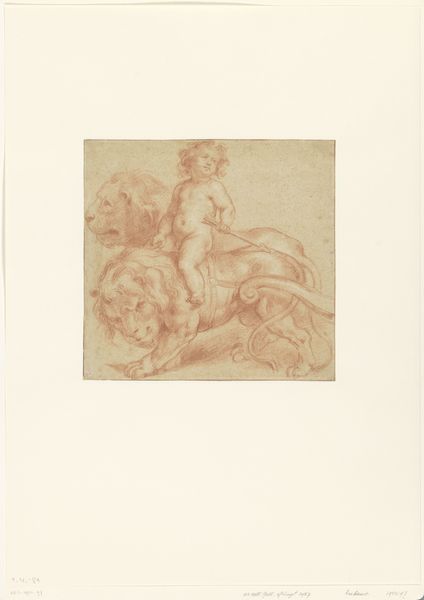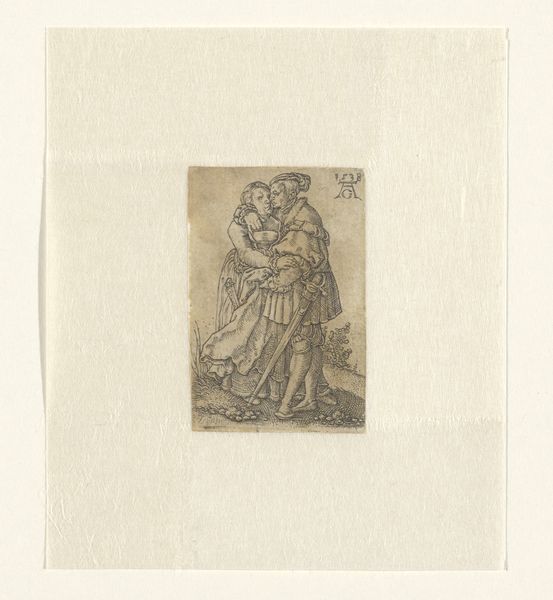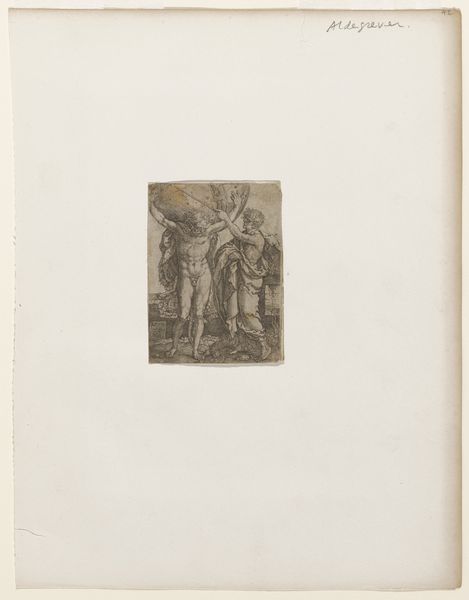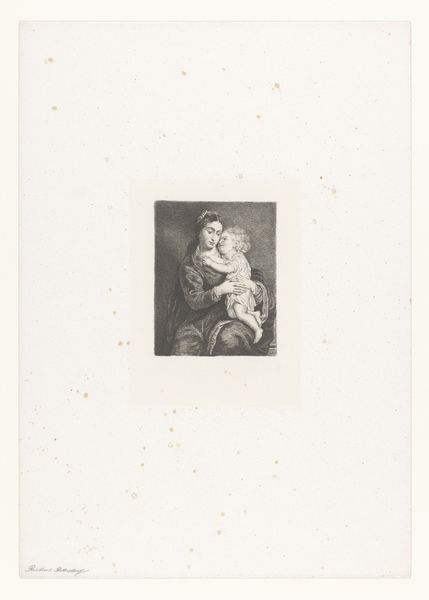
Dimensions: height 229 mm, width 201 mm
Copyright: Rijks Museum: Open Domain
Curator: Looking at this print, "Anna te Drieën," dating back to 1783 and currently housed in the Rijksmuseum, by Adam von Bartsch. The artwork itself, rendered in ink on paper, employing engraving techniques, has such an intricate appeal. What’s your first take? Editor: Immediately, I’m struck by the stark contrasts within the monochromatic palette. There’s a serene stillness, but also a strong undercurrent of the social and religious constructs of its time evident. Curator: Indeed, Bartsch positions "Anna te Drieën" within a long tradition of depictions of Saint Anne with the Virgin Mary and Christ Child. Analyzing the religious iconography illuminates how power dynamics within the church influenced societal norms regarding women and family. Editor: The rendering of Anna also intrigues me; her stoic appearance stands in stark contrast to the youthful exuberance of the child and the delicate beauty of Mary. There's almost an isolation there, even within this familial scene, hinting at complex gendered roles within the society that influenced Bartsch’s creative perspective. Curator: You bring up an important point about gendered roles and visibility, this echoes broader baroque traditions, highlighting status through imagery. It reminds us of the power of visual culture in perpetuating social hierarchies and religious values. It makes me think of art's ability to mirror, but also to subtly reinforce or critique societal structures. Editor: Absolutely, considering Bartsch's life, his patrons, the cultural contexts circulating through society, provides important pathways to understanding art, institutions, social-politics, as we seek out different historical understandings that continue to frame modern culture. The gaze in Baroque art is never innocent, and situating it historically is imperative. Curator: Ultimately, "Anna te Drieën," through Bartsch’s craftmanship, presents layers of insight for both contemporary audiences. The piece continues to be deeply meaningful, both on its own merits, but also by providing a visual record of artistic exchange between cultures. Editor: Yes, precisely, and I appreciate the nuances in your analysis that allow for understanding on social constructs of past gender dynamics—but in considering social expectations. Art truly functions as a lens onto a myriad of different stories.
Comments
No comments
Be the first to comment and join the conversation on the ultimate creative platform.
